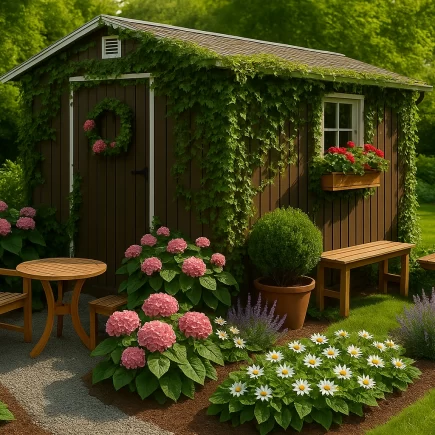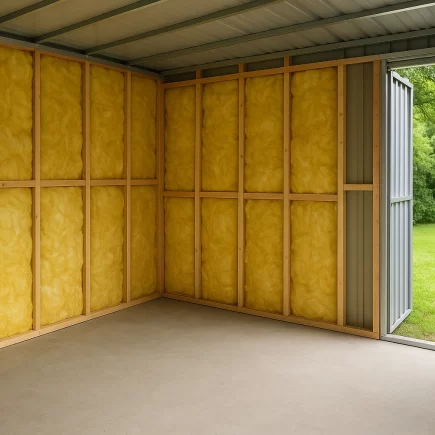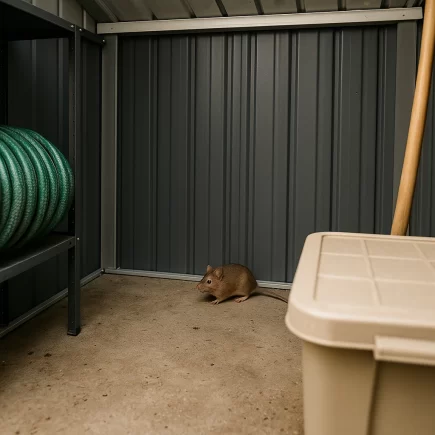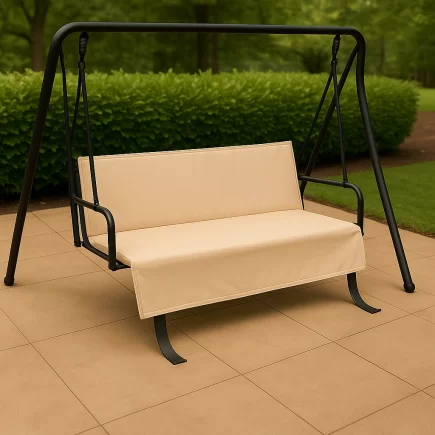Portable air coolers are a great solution to keep your space cool during hot months without the heavy energy consumption of air conditioning units. Whether you’re using an evaporative air cooler, swamp cooler, or a similar model, regular cleaning is essential for maintaining efficiency, air quality, and the longevity of your device.

In this comprehensive guide, we’ll walk you through the essential steps to clean your portable air cooler effectively. By the end of this article, you will have all the knowledge needed to keep your air cooler working optimally and ensure it serves you well for years to come.
Tools and Materials You Will Need
Before diving into the cleaning process, it’s important to gather the tools and materials required. Having everything in place will make the task much easier and more efficient.
Recommended Cleaning Products

- Mild Detergent: Helps clean dirt and debris without harming the components.
- Vinegar: Excellent for disinfecting and removing mineral deposits.
- Essential Oils (optional): For deodorizing and adding a fresh scent to your air cooler.
Cleaning Tools
- Soft Brushes: Ideal for gently cleaning pads and filters.
- Cloths or Sponges: To wipe down surfaces and remove dust and grime.
- Protective Gloves: To protect your hands from cleaning products and sharp parts.
- Vacuum Cleaner (optional): To clean out any dust or debris from hard-to-reach areas like vents or fan blades.

Having these materials ready will help you get the job done efficiently and without hassle.
Step-by-Step Guide to Cleaning Your Air Cooler
Step 1: Power Off and Safety First
Before cleaning your air cooler, the first thing you need to do is unplug the unit. This ensures that you don’t accidentally cause an electrical short or hurt yourself while cleaning. Always remember that safety is the first priority, especially when dealing with electrical appliances and water.
Step 2: Cleaning the Water Tank
The water tank is one of the most critical components to clean, as stagnant water can develop mold and bacteria. Follow these steps to clean it properly:
- Drain the Water: Begin by draining any remaining water from the tank. If the unit has a drainage plug, use it to empty the water. For detachable tanks, simply remove and pour out the water.
- Scrub the Interior: Use a soft sponge or cloth soaked in a mild detergent or vinegar solution to scrub the inside of the tank. Pay close attention to corners and crevices where mineral deposits or grime may build up.
- Disinfect: Once scrubbed, fill the tank with a mixture of vinegar and water (50/50 ratio). Let it sit for 30 minutes to disinfect the tank, then rinse thoroughly with clean water.
- Dry Completely: After cleaning, leave the tank upside down to allow it to dry completely before reassembling the cooler.
Step3: Cleaning the Honeycomb Pads
The honeycomb pads are responsible for cooling the air, so keeping them clean is essential for efficient performance. Here’s how to clean them:
- Remove the Pads: Carefully remove the honeycomb pads from the cooler. Be gentle to avoid damaging them or the frame that holds them.
- Soak and Scrub: Fill a bucket with water and add a small amount of mild detergent or vinegar. Soak the pads in the solution for about 15 minutes to loosen dirt and mineral deposits. Use a soft brush to scrub the pads gently.
- Rinse Thoroughly: After scrubbing, rinse the pads thoroughly with clean water to remove all soap and debris.
- Dry Completely: Allow the pads to air dry completely before reinstalling them into the cooler. This is important to avoid mold growth.
Step 4: Cleaning the Fan Blades

Dust and dirt on the fan blades can affect airflow and reduce the cooler’s effectiveness. Clean the fan blades with the following steps:
- Use a Damp Cloth: Use a damp cloth to wipe down the fan blades. Be careful not to get the motor or electrical parts wet.
- Vacuum the Vents: If your cooler has vents, use a vacuum cleaner with a soft brush attachment to remove dust from the vents and fan blades.
- Dry: Once cleaned, wipe the fan blades with a dry cloth to remove excess moisture.
Step 5: Wiping the Exterior
The exterior of your portable air cooler should also be wiped down regularly to remove dust and grime.
- Use a Damp Cloth: Wipe the exterior with a damp cloth to remove any surface dust. Be sure not to let water get inside the motor or electrical components.
- Clean Vents and Grills: Pay extra attention to the vents and grills, as they tend to accumulate dust. You can use a soft brush to clean these areas.
How Often Should You Clean Your Portable Air Cooler?
The frequency of cleaning your portable air cooler depends on how often you use it and the environment in which it’s placed. However, here’s a general guideline:
| Component | Cleaning Frequency | Notes |
| Water Tank | Weekly or bi-weekly | If used regularly, drain and clean to prevent bacteria. |
| Honeycomb Pads | Monthly | Clean or replace if they are heavily stained or clogged. |
| Fan Blades | Monthly | Check for dust buildup and clean as necessary. |
| Exterior and Vents | Every 2-3 weeks | Dust the outside and wipe down the vents for optimal airflow. |
Seasonal Maintenance Tips and Off-Season Care
If you live in an area where the weather is seasonal, it’s a good idea to perform a thorough cleaning and maintenance before storing your air cooler for the offseason. This will prevent mold and mildew buildup during storage and ensure it’s ready to use the next time you need it.
How to Prevent and Handle Odors
Over time, your air cooler might develop musty smells, especially if the water tank or pads aren’t cleaned regularly. Here’s how to handle odors:
- Regularly Clean the Water Tank
A dirty water tank is the primary cause of bad odors. Empty and clean the tank at least once a week during the peak cooling season.
- Deodorizing
To keep things fresh, add a few drops of essential oils (such as lavender or citrus) to the water tank or honeycomb pads. Alternatively, a mixture of vinegar and water works well to neutralize odors.

- Replace Old Pads
Over time, honeycomb pads can absorb odors and become less effective. If you notice persistent smells even after cleaning, it may be time to replace the pads.
Eco-Friendly Cleaning Solutions
If you prefer eco-friendly solutions, there are several natural ingredients that work just as well as commercial cleaning products. Here are a few alternatives:
- Vinegar and Water: A 50/50 mix of white vinegar and water is excellent for disinfecting surfaces and removing mineral buildup.
- Baking Soda: Baking soda is great for scrubbing and removing odors from the water tank or cooling pads.
- Lemon Juice: The acidity in lemon juice makes it an effective natural cleaner and deodorizer.
Using these natural solutions is not only better for the environment but also healthier for you, as they don’t contain harsh chemicals.
Safety Tips and Best Practices
When cleaning your portable air cooler, always follow these safety tips:
- Unplug the Unit
Always disconnect the cooler from the power source before cleaning.
- Avoid Harsh Chemicals
Harsh chemicals can damage sensitive parts of your cooler and are harmful to your health.
- Allow Components to Dry
Ensure that all parts, especially the water tank and pads, are completely dry before reassembling the cooler.

Troubleshooting: What to Do if Your Cooler Isn’t Working After Cleaning
If your air cooler is not working properly after cleaning, here are some things to check:
- Low Airflow
This could be due to clogged pads or dust in the fan blades. Make sure to clean the fan and pads thoroughly.
- Water Flow Issues
Check the water tank and ensure the drain is not clogged. Inspect the pump to make sure it is functioning properly.
- Unpleasant Odors
If your cooler smells bad even after cleaning, check the pads and water tank for mold or mineral buildup. You may need to replace the pads if the odors persist.
Maintenance Tips for Long-Term Care
To ensure your portable air cooler works effectively for years, follow these tips:
- Store Properly in Off-Season
When storing the air cooler during the off-season, make sure to drain all water, clean the unit, and store it in a cool, dry place.

- Regular Filter and Pad Replacement
Even with regular cleaning, you’ll need to replace the filters and pads every 1-2 years depending on the usage.
FAQS
1.How can I tell if my air cooler pads need replacement?
If your pads are discolored, clogged with dirt, or have a strong odor even after cleaning, it’s time to replace them. Worn-out pads can reduce efficiency and cooling performance, so regular inspection is key.
2.Can I use tap water in my portable air cooler?
While tap water is fine for most coolers, mineral buildup from hard water can affect performance over time. Using distilled or filtered water occasionally can help prevent scale buildup and extend the life of the unit.
3.Why is my air cooler still emitting bad smells after cleaning?
Persistent odors can result from mold in the water tank or pads, or leftover mineral deposits. Ensure all parts are thoroughly cleaned and dried, and consider replacing the pads if the smell persists.





















